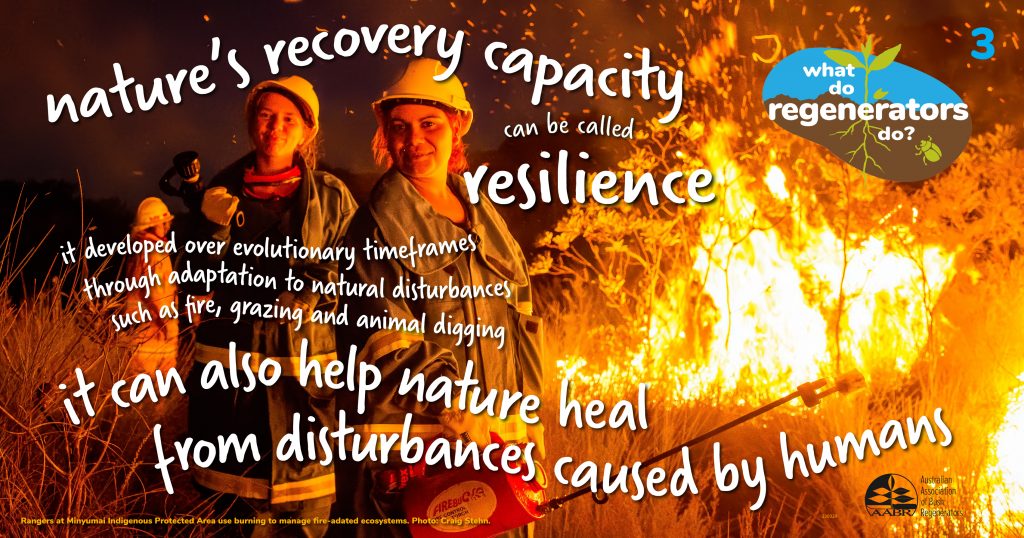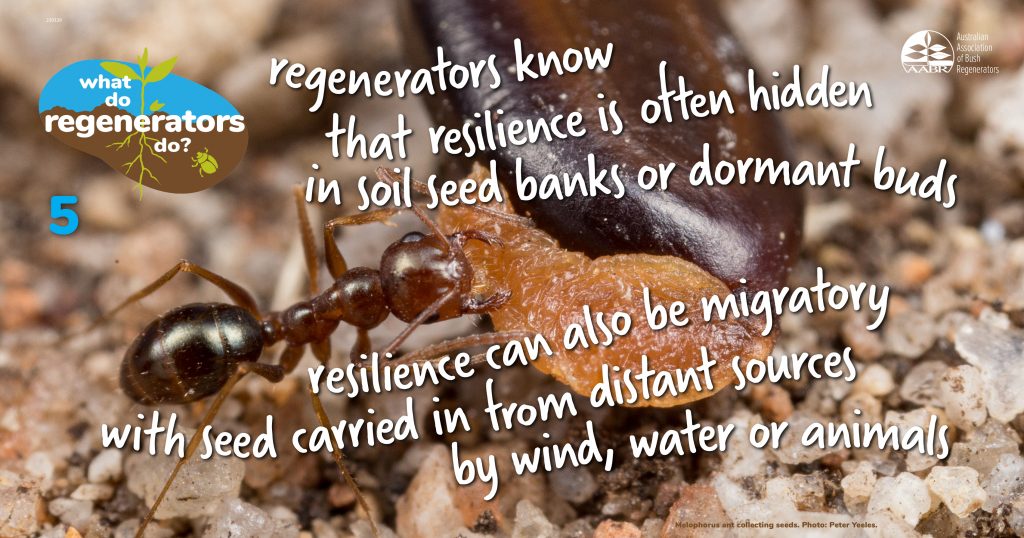1. Which vegetation type are you working with – more than one?
Each of the four main Australian vegetation types recovers differently after disturbance – and the species within them are somewhat adapted to the types of disturbance to which it has been exposed over evolutionary timeframes and which often will still occur in nature. [More about this in Sheet 3]
The four vegetation types and their historical disturbances are:
- rainforest – treefalls, cyclones, landslips
- sclerophyll forest and woodland – fires, droughts
- grassy types – fires, grazing, drought.
- wetlands – fluctuations in water regimes, erosion, siltation.
2. What are the sources of degradation on your site?
These may include primary sources (such as excessive clearing, grazing – or changed fire, water or nutrient status) or secondary sources (such as weed invasions).
3. Which native species still exist on the site and nearby? Which are missing?
If you have a genuine interest, you will quickly gain a familiarity with the more obvious local species, even if this is new to you. You will be surprised at how much you can work out yourself just by looking. Get help if necessary.
4. Might seed of the missing species be stored in the ground?
Shorter-lived shrubs, trees and annuals (which usually can’t resprout when cut down or burnt) can sometimes store seed in the soil for decades. Good news! Seed might still be stored in the soil on your site waiting for the right triggers for germination. But longer lived species (which tend to be capable of resprouting) usually don’t store seed in the soil for long. But these can often be collected locally and reintroduced.
5. Can the missing species come in naturally, or will they need your help?
Long-lived trees (eg. Eucalypts and She-oaks) might be blown in if they occur within about 20 metres. Fleshy-fruited tree species such as those occurring in rainforest communities can be carried in by birds or bats from quite long distances. (“Starter” trees on your site can attract birds who will bring in more species). Grasses are often wind dispersed but many can stick on fur and can be spread quite well. But species that depend on gravity or ants for dispersal (ie. their fruits don’t have wings, hairs, hooks or fleshy fruits) can only migrate up to a couple of metres per generation and may need help.
6. Where do I work first?
Usually there is at least one core area that has more plants left than others and which may have more resilience. Even just a few scraps of native grass or grazed down rootstocks can indicate the soil may have some hidden resilience stores. (The area with the highest resilience is usually furthest away from the source of degradation and vice versa).
But don’t jump into the worst areas first if they have no resilience, as the resilience has got to come from somewhere. Rather, work at expanding the edges of the more resilient bits till eventually it all coalesces
‘Follow up’ repeatedly to consolidate the recovery of a smaller patch before moving on to the next patch



Leave A Comment